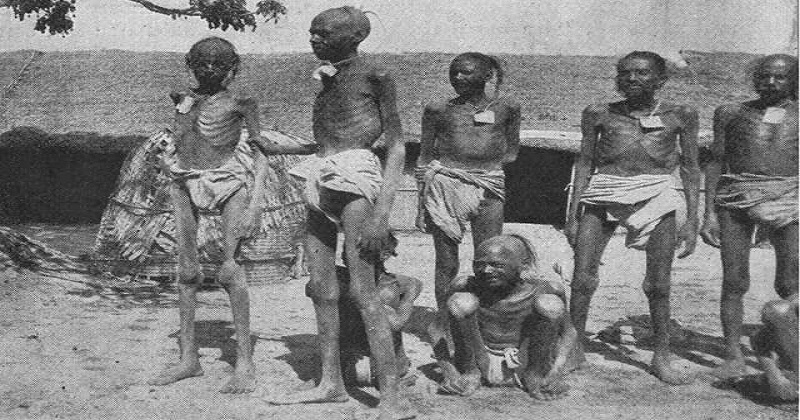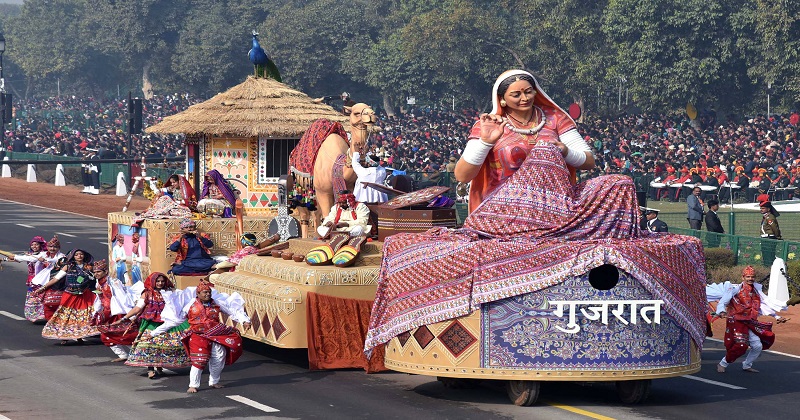
On April 6, 1919, British troops killed at least 379 unarmed demonstrators in Jallianwalla Bagh. An even more horrific massacre occurred in 1922, the details of which have been kept secret for many years. In the village of Bhil, Gujarat on March 7, 1922, several hundred people were killed, houses burnt and many others badly injured . This was another British-directed massacre. Motilal Tejawat, the man who people regarded as a messiah for awakening them to the injustice of the native rulers and the British, is a name that many of us are familiar with.
It was during Prime Minister Narendra Modi’s tenure as Gujarat Chief Minister that this untold and forgotten chapter of history was exposed to the world. Motilal Tejawat was born in Koliyari in the Udaipur district of Rajasthan in 1886. Today, Shahid Smriti Van and Shahid Smarak are witnessing this horrific incident in the village of Palchitaria. Having completed his formal education up to the fifth grade, he worked in the Jhadol tehsil for a time, witnessing the suppression of the Bhil people at the hands of the British and the Thakur.

After resigning from his post, he began working as a shopkeeper in Udaipur city. In his first business venture, he was sent to Jhadol, where the Thakur ordered him to hand over Tejawat’s employer’s building materials, which he refused to do, and was mercilessly punished. It was so humiliating and painful for him that he gave up his job and became a full-time political activist. Tejawat was deeply moved by the Bijolia movement. He somehow obtained pamphlets of that movement and distributed them to people living in Bhil majority areas. Through several meetings in Bhil villages, he was able to organize committees that were eager to articulate Bhil grievances and demands.
Gradually growing mass movements in Bhil villages gave Tejawat confidence, and he began associating his movement with the large Independence movement of the country led by Gandhi. He was a big supporter of an upcoming ‘Gandhi Raj’. His efforts had slowly begun to pay off, and he managed to put together a large gathering of Adivasi peasants in Chittor for the annual peasants fair to spread his message and mobilize his people.
As a result of the fair, a large number of people began marching to Udaipur, where the Maharana had agreed to listen to their problems and demands. But there were several important issues on which the Maharana refused to concede like: the use of forests by the Adivasis, begar and the grouping of the Adivasi people for Shikar. Many Reformist newspapers supported the Eki movement (which aimed to unite opposition to all forms of exploitation of Bhils by the states and jagirdars), and several articles were published in newspapers like Navin Rajasthan. Newspaper articles have described the conditions of the Adivasis and farmers associated with the movement.
Mass movements such as this frightened the British army, who were familiar with the events of the Jallianwala Bagh incident. They suppressed them completely. Motilal Tejawat, a leader of a large gathering of Adivasis led by Mewar Bhil Corps (MBC), opened fire on the gathering at noon on March 7, 1922. The constant firing resulted in the deaths of around 1,200 people and serious injuries to many more. Major Sutton described the massacre as a ‘skirmish’ that claimed 22 lives.
Despite Tejawat’s escape, the movement continued for another few months. The British were unfazed by the brutal killing of thousands of people and on May 8, 1922, they besieged the villages of Bhula and Balohiya, killing 1,200 people and burning 640 houses to ashes. The Eki movement collapsed by the end of 1922.
In the aftermath of the previous public massacres, the British used all their clout to stop the news of another, but even more brutal, mass killing spreading throughout the country. Despite British efforts to suppress the incident, no one knew about Tejawat’s injury. He sustained bullet wounds to his thighs and was seriously injured. Some of his supporters rescued him and took him into the hills, where he remained until he surrendered to Gandhi in 1929 and remained imprisoned thereafter. In 1963, he died in Udaipur.
In the aftermath of the Independence, he paid his respects to the martyrs of 1922 at the site of the incident, Palchitaria. As he addressed a gathering of people and relatives of those killed two decades earlier, he named the spot of the massacre ‘Virbhumi’ and recommended that a fair be held in their memory on March 7 once a year. This time at the Republic Day Parade, the Government of Gujarat paid tribute by showcasing their freedom movement.

Post Your Comments